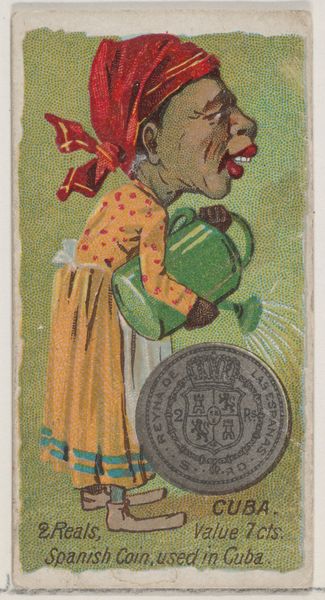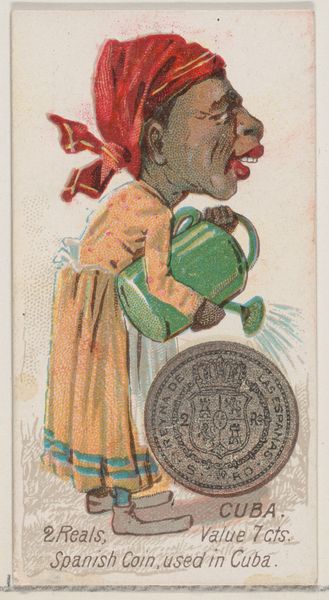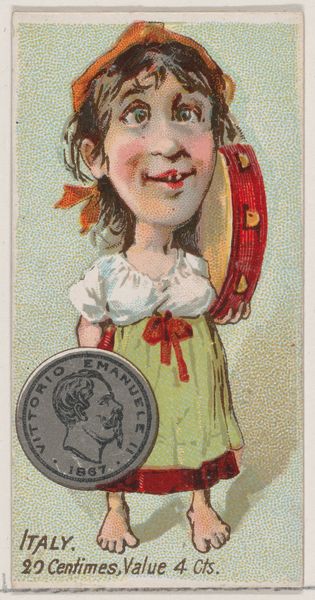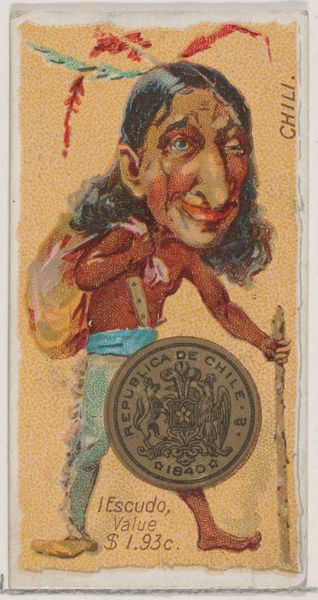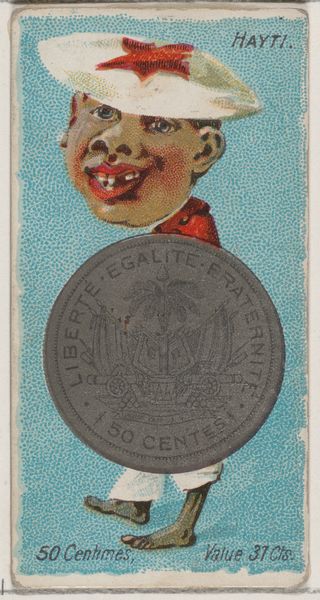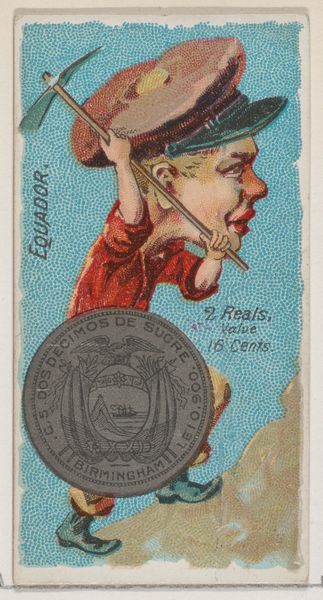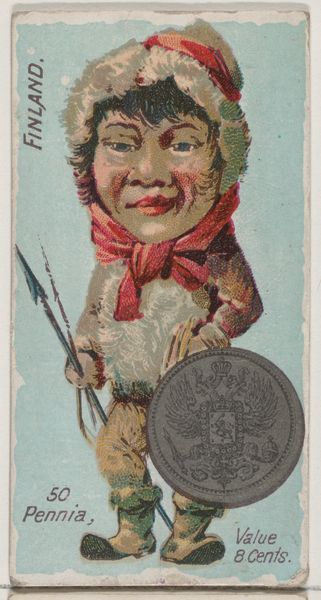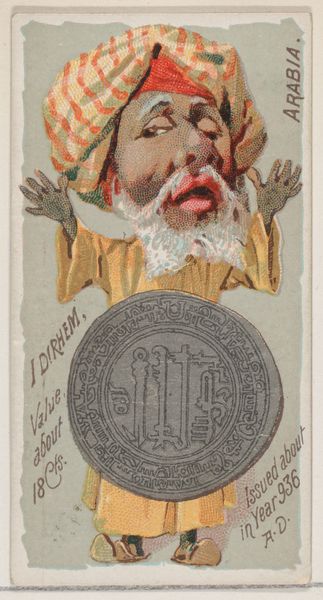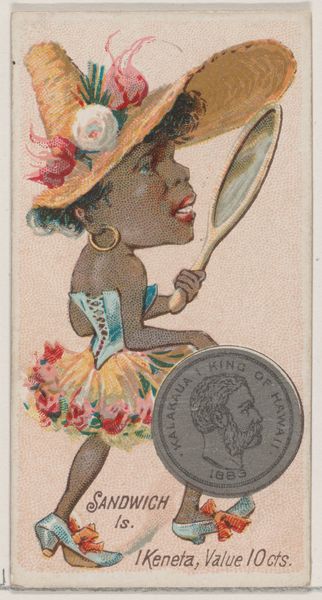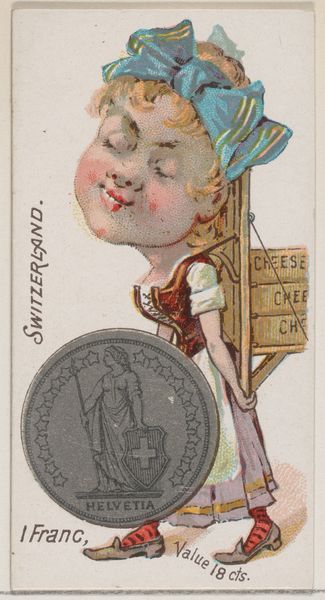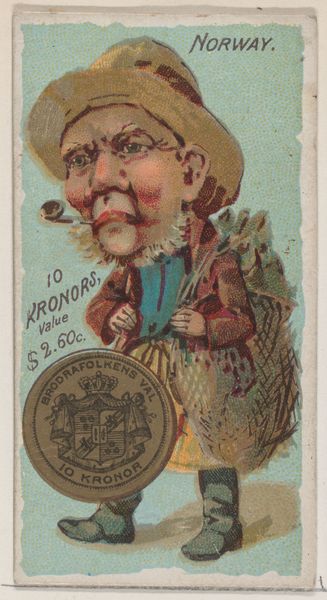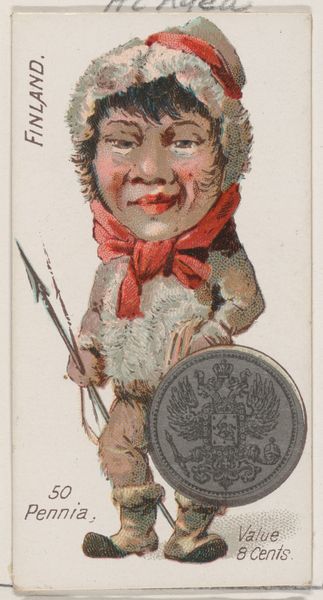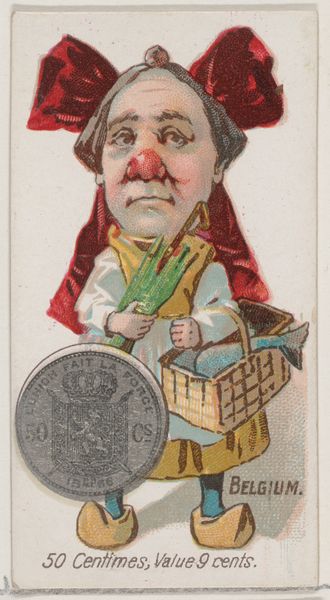
Caricatured Brazilian, 1000 Reis, from the series Coins of All Nations (N72, variation 1) for Duke brand cigarettes 1889
0:00
0:00
drawing, coloured-pencil, print
#
portrait
#
drawing
#
coloured-pencil
# print
#
caricature
#
coloured pencil
#
orientalism
#
watercolor
Dimensions: Sheet: 2 3/4 x 1 1/2 in. (7 x 3.8 cm)
Copyright: Public Domain
Editor: So, here we have "Caricatured Brazilian, 1000 Reis," dating back to 1889, part of the "Coins of All Nations" series by W. Duke, Sons & Co., crafted with colored pencils and print. It's, well, quite something. There's a definite caricature happening with the figure holding what looks like a coffee sack. What are your initial thoughts on this piece? Curator: It's fascinating to consider this print within the context of its production. Cigarette cards like these were mass-produced using industrial printing techniques. How do those materials—the paper stock, the specific pigments used in the coloured pencils— speak to the broader economic and social systems at play in the late 19th century? Editor: That's an interesting angle. I was more focused on the, let’s say, *uncomfortable* portrayal of the Brazilian figure. The image is definitely trafficking in stereotypes. Curator: Precisely. And whose consumption were these images designed to fuel? Consider the link between the commodification of "exotic" cultures and the consumption habits of primarily white, Western smokers. These images literally circulated with a product meant for immediate use and disposal. Editor: So, the artistry, if we can call it that, is almost secondary to its function as advertising and, you're suggesting, as a reinforcement of colonial power dynamics? Curator: Not secondary, but inextricably linked. The artistry—the caricature itself, the selection of colors, even the typography—all contributed to the card's effectiveness as a tool of persuasion and a marker of social identity. Can you see how the act of collecting these cards might have fostered a sense of ownership over the depicted cultures? Editor: Absolutely. It's less about aesthetic appreciation and more about consumption and control. It’s disturbing to view it with that awareness. Curator: Indeed. By looking at the materials, the method of production, and the context of its circulation, we gain a deeper, more critical understanding of this seemingly simple cigarette card. Editor: I’ll definitely think about how the means of production reflect the larger historical narrative from now on. Thanks!
Comments
No comments
Be the first to comment and join the conversation on the ultimate creative platform.
